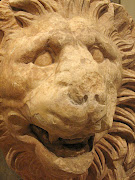Initially, I checked the book out from the library, but liked it so well I bought my own copy (a nice Penguin trade paperback). I’m not sure what actually brought Layard’s book to my attention: whether I came across a reference to it in another book I was reading, or just came across it while roaming the public library. One project I have embarked on is to keep a closer eye on how books come into my life. I mean in a figurative sense. I’m quite familiar with how they get in the front door, as is my wife Elly, who balances our check book.
Layard, a London economist, notes that over the last 50 years income levels have increased significantly in America and the UK, but happiness has not increased. The fact that happiness can be effectively measured is something he treats early in his book, which includes extensive end notes and a long reading list. The book is a jumping off point for many interesting reading projects, one factor that caused me to add it to our home library. At any rate, after showing how happiness can be effectively measured, and providing examples of studies that have done so, he essentially asks the question "What’s wrong with the income/happiness picture.” If people are making more money, why are’t they happier.
The answers Layard provides, noting that many things contribute to happiness, take a more or less big picture view based in economics, which is not surprising given the author’s background. If this sounds like boring or difficult reading, let me assure you it is not. The text itself is just over 200 pages, pithy, with provocative insights and not a small amount of humor.
So how can more income be a form of pollution?? Layard points out that for much of the world’s population, more income is critical for happiness simply because many people don’t have enough income to provide basic necessities like food, clothing, and shelter. After a certain point, however, additional income has an increasingly smaller impact on happiness. In fact, some rather convincing studies have shown that relative income, that is how much one makes in comparison with his or her social group, is more important to happiness than the income level itself. People who earn less money than their friends are less happy, while people who make more money are happier. The catch, however, is making more money increases happiness less than the increase in unhappiness among those who fall behind. Thus, the rat race and Layard’s conclusion about the polluting effect of striving to maximize income.
If the consumers are to consume more, it is they who will have to produce it. If they work harder, they can indeed consume more but only at the sacrifice of something — their family life or their tennis or whatever. So it only makes sense for them to work harder if there is some overall net benefit. But as we have seen, people can have too great a work incentive, because one of their aims is to improve their relative income. Every time they raise their relative income (which they like), they lower the relative income of other people (which those people dislike). This is an “external disbenefit” imposed on others, a form of physical pollution. If people do not take this pollution into account when they decide how much to work...the result will be too much work and a distorted work-life balance.
Taxing Pollution
At least that would be true if there were no taxes. But taxes provide a standard cure for pollution. They make it possible to charge people for the damage which they do to others — and so force them to take this damage into account. People will thus take note of external costs which they would otherwise ignore, and if the level of tax is right, the polluting activity will be cut back to the most efficient level.
...In both situations the tax is not distorting (by discouraging something that is desirable) but corrective (by discouraging something that is undesirable.) This puts a completely new light on our existing taxes, because both economists and politicians have tended to look on taxes as distorting, even at very low levels of tax. But we have now seen that at least up to some point the taxes are performing a useful function that we were unaware of. They are helping to preserve our work-life balance.
This is just one aspect of a multi-faceted and fascinating book. Layard’s analysis of the impact of television on happiness (predictably, it decreases happiness) was another highlight for me.
I’m not sure reading this book will increase the happiness of my conservative friend, but it should at least generate some lively conversation.





















